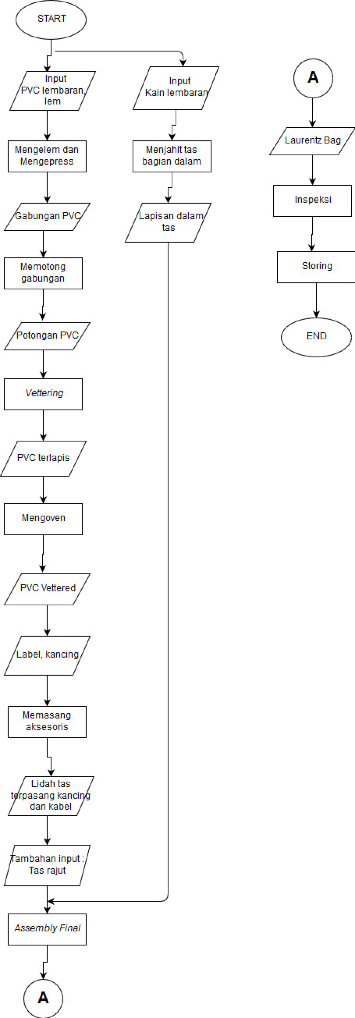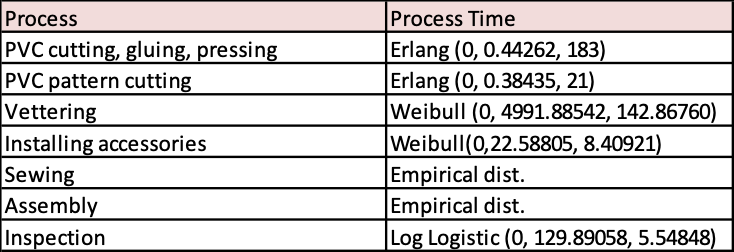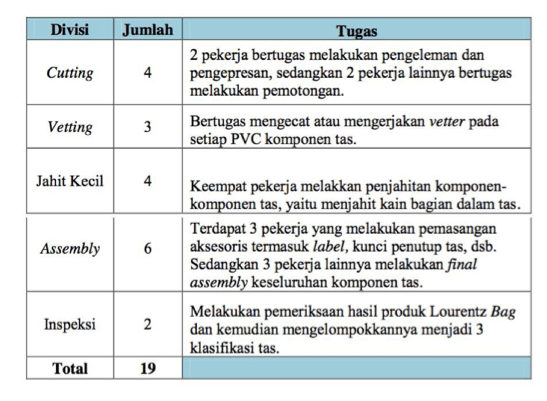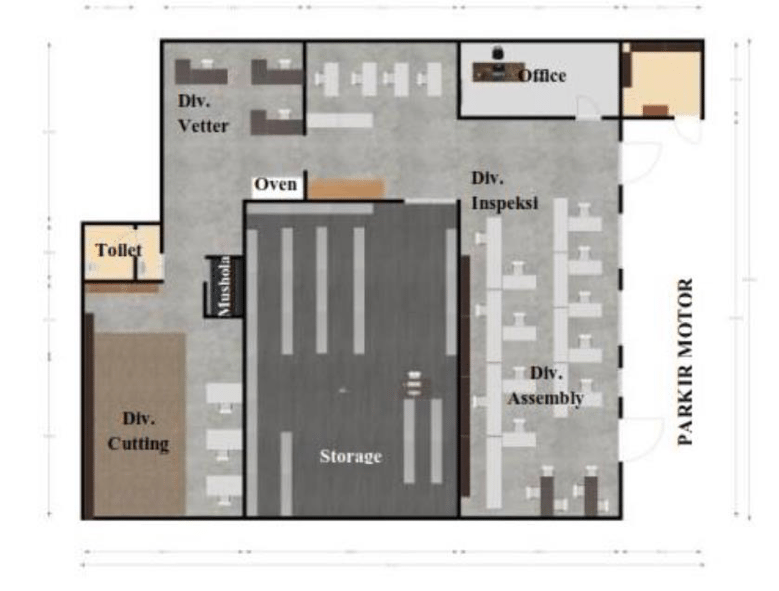Written by: Ajeng Alfia F.T.
Established in 2002, Gendhis Bag is a home industry company that focused on producing various types of handmade bags made from natural material such as rattan, pandanus, mendong, water hyacinth, etc. The product itself has been distributed to domestic and international market through various distribution channels such as handicraft exhibitions, retailers, and e-commerce. Has been established for more than 15 years, Gendhis Bag is currently a trendsetter in natural bags market.
Gendhis Bag has a workshop located in Ring Road, Sleman, Yogyakarta. They employ more than 20 high-skilled craftsman and applied some technical tools on their production line in order to meet the increasing demand. In 2017, a simulation project was conducted in their Lourentz Bag production process to find out what improvements that could be done to increase their production line productivity.
Simulation is the process of transforming the process of a real system into a model that could represent the response of actual system for an event in such period of time. (Schriber, 1987). Simulation can be used to see the interaction between components in a system, the output changes caused by an improvement in a system, entity utilization, etc. The method is used when implementing a change in a system directly would be costly, time-consuming, and requires a lot of energy.
A model was generated from Gendhis Bag actual system by considering several assumptions. The model was built to present Lourentz Bag (product of Gendhis Bag) production process with a daily average output of 40. The production starts at 8 am until 5 pm, 5 days a week.
System definition and data collection was conducted as the first step of making a model. Lourentz bag system flow can be seen in Figure 1 as the representation of Lourentz Bag production process.

Figure 1. Lourentz Bag System Flow
A time study was held to gathered production duration per process. The data gathered are used to build a process time distribution using ExpertFit feature on Flexsim. A list of process time distribution could be seen in Figure 2. Process Lourentz bag production is done by 19 workers assigned to 5 workstations (cutting, vetting, sewing, assembly, and inspection). The allocation of the workers can be seen in Figure 3.

Figure 2. A list of process time distribution

Figure 3. Worker Allocation
The team also built a production layout and measured the distance between work stations. The production layout can be seen in Figure 4.

Figure 4. Production Layout
Model of Lourentz Bag production is made based on the existing data. The simulation was run for a month and concludes that workers in the process of installing accessories and inspections have a high idle time. In order to response to the condition, the team decided to make 3 improvement scenarios. The first scenario is to
